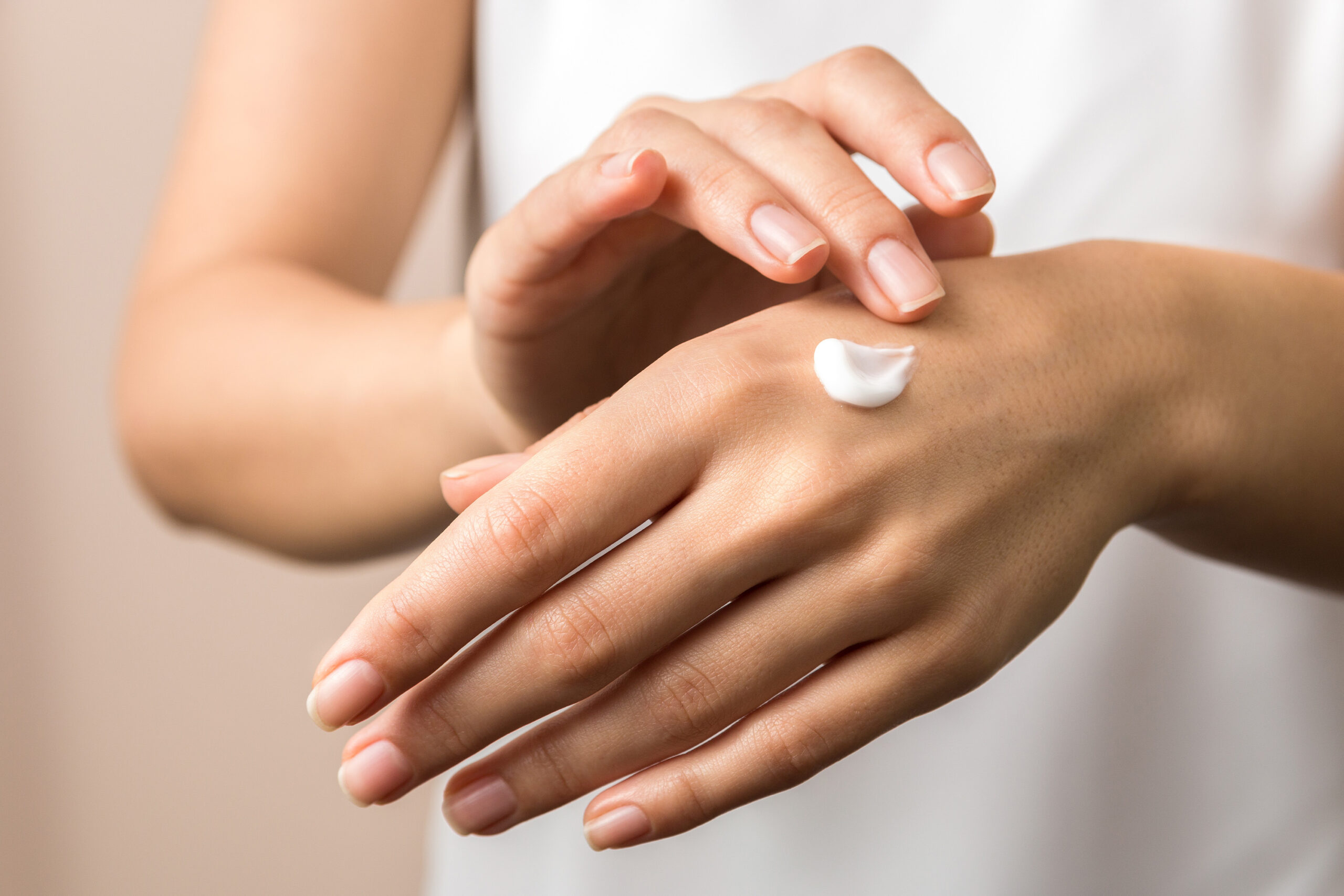
For one poisoning victim, it all began in July of 2019, when she developed weakness in her upper extremities and sudden, painful sensations through her hands and arms. Four weeks later, she was deteriorating in hospital to a state of “agitated delirium,” in a Sacramento hospital. According to the case report, it led California Poison Control to identify abnormally high levels of mercury in the blood of the 47-year-old woman that had accumulated over several years.
Investigation determined the cause to be the skin-lightening cream she obtained from Mexico. At the time of the reports publishing, almost five months after she first reported symptoms, the patient was unable to speak or care for herself and connected to a feeding tube.
The skin-lightening cream she used contained 12,000 parts per million (ppm) of an organic mercury compound. The FDA restricts mercury in cosmetics to use as a preservative where no alternative exists, and allows only 1 ppm of mercury in skin care, 65 ppm in eye products.
Mercury is one of eleven chemicals the FDA restricts, as opposed to the over 1,000 banned chemicals in the European Union. Despite being illegal in the U.S., mercury-containing products have continued to enter the country due to a lack of regulation.
“These types of products are typically purchased from foreign countries and improperly labeled, sometimes concealing the use of mercury containing compounds which is another violation of the law,” notes cosmetic chemist Kelly Dobos.
This has led states to pass their own enforcement measures, as New York recently did, in order to stop the retail sale of products (often that do not have ingredient lists) that contain mercury. This law was passed just a month after a Minnesota woman permanently lost partial vision and exposed her entire household to mercury with locally purchased products that did not list mercury as a contained ingredient.
In 2022, for the first time since the Food and Drug Administration was established in 1938, new enforcement legislation aims to close loopholes and strengthen the FDA’s ability to regulate. Signed into law December 29, 2022, the Modernization of Cosmetic Regulation Act finally mandates companies to provide a full list of ingredients, report adverse events and record keeping, as well as safety substantiations. This will enable enforcement and educate the public on what easily purchased products may contain mercury, like the ones listed here by the California Department of Public Health.
In a talk given to the American Academy of Dermatology (AAD) last year, Plano, TX dermatologist Seemal R. Desai, MD warned against the potential consequences of these skin-lightening treatments. Dr. Desai is a board certified dermatologist and was also elected to lead the AAD as the president for 2024, and is the youngest person elected to the position. “The bottom line is that skin bleaching products that consumers are purchasing online and overseas may not be safe,” says Dr. Desai. “In some cases, ingredients aren’t listed on the package, which should be a big warning sign to stay away.”
How do mercury and melanin interact?
Outside its use as a preservative, mercury is used in skin-care products that aim to lighten skin, correct dark spots, lighten acne scars, and work as an anti-aging cream. While it isn’t the most effective agent to accomplish skin lightening, it does interrupt the production of melanin in the skin.
Melanin exists in the human body in several different forms, including in the brain as neuromelanin. In human skin, eumelanin production determines skin color and can be affected by UV exposure. Early humans had evolved darker skin as a result of losing body hair and the high levels of UV radiation, providing protection from sunburn and some skin cancers. As humans migrated out of Africa and away from the equatorial sunshine, UV radiation wasn’t strong enough to penetrate protective melanin. Because the sun’s rays prompt the production of vitamin D, lack of sunlight led to vitamin D deficiencies. Over time, pigment was lost in order to let more UV light in.
Albinism occurs when there is very little synthesis of melanin in the body, which is the essential goal of skin-lightening products. Mercury accomplishes this by replacing a step in the process of melanin production.
“Mercury interferes with the production of tyrosinase, an enzyme that catalyzes the production of melanin pigments in the skin,” Dobos explained. “Skin lightening or skin bleaching is really a drug claim and there currently are no ingredients for use in over-the-counter products approved by the U.S. FDA for these types of claims.”
Board certified dermatologists are able to treat skin disorders like hyperpigmentation, which involves an excess in the production of melanin. This occurs sometimes as a result of an underlying medical condition or due to skin damage from the sun, acne scarring, or injury.
New York dermatologist Jody Levine, MD notes that consulting with a doctor is the most important step to achieving results with the least amount of negative side effects.
“It’s important to discuss their goals and then decide on the best course of treatment. Hydroquinone is a prescription lightening agent and there are other natural lighteners as well,” Dr. Levine explains. “But it is not smart to experiment with ‘natural’ products before first consulting with a doctor. Certain essential oils or acidic natural ingredients can cause skin irritation, burns and even resultant hyperpigmentation.”
Mercury in the human body
Mercury in high amounts is used to create a significantly more dramatic effect of skin whitening, and exists in three different forms: organic, inorganic, and elemental (metallic). Elemental mercury is a liquid at room temperature and is used in some thermometers and light bulbs.
Inorganic mercury is the combination of mercury with another element and is used more frequently in skin care than organic mercury. The FDA has found mercury chloride is used in skin-lightening creams in excess of 200,000 ppm. These high doses of mercury are absorbed into the skin and excreted through the kidneys, leading to severe renal damage. Consistent high levels of exposure can lead to severe mercury poisoning, which may result in neurological disturbances and memory problems.
In fact, the origin of Alice in Wonderland’s Mad Hatter is inorganic mercury poisoning. Hatters in the 18th century up until the mid 20th century worked with mercuric nitrate in poorly ventilated rooms to cure the felt used in hat making. As a result of this chronic occupational exposure, hatmakers often developed neurological symptoms that ranged from a metallic taste in the mouth to a tremor in the hands, to memory loss and irritability. The earliest use of the phrase “mad as a hatter” to indicate a person’s mental instability actually predates Lewis Carroll’s hatter by decades, first appearing in an 1829 issue of Blackwood’s Edinburgh Magazine.
Organic mercury, though, the kind the patient in California was exposed to, is far more toxic. Inorganic mercury is water-soluble and passes out of the system the way most things do, through kidney excretion. This, as mentioned before, can lead to severe kidney damage over time. Organic mercury, though, is fat-soluble. That means it dissolves into lipids (fats and oils) in the body, including those that protect the nervous system. Organic mercury can also easily pass into the bloodstream and cross the blood-brain barrier, leading to severe neurological symptoms. In this way, toxic mercury can also pass into the placenta of a pregnant mother, causing the infant to be born with “developmental abnormalities and cerebral palsy,” according to the CDC.
These symptoms may be delayed for weeks as the mercury is absorbed into the system, leading to tingling sensations, loss of muscle control, headaches, blindness, loss of hearing, and loss of the ability to speak.
Organic mercury can also bioaccumulate, or build up over time in a living organism. A fish containing high levels of organic mercury can pass that mercury toxicity on to the animal that eats it, causing mercury poisoning to flow through the food chain. In a similar way, organic mercury in cosmetics can be easily passed between people, putting the entire household at risk of exposure.
“Mercury can spread through air and water, and through inhalation and can cause damage to the nervous, digestive and immune system,” Dr. Levine explains.
FDA warns of risk
Despite the clear risk to human health, organic and inorganic mercury are still commonly found in cosmetics originating outside the U.S. The FDA keeps a running list of products known to contain mercury outside acceptable levels and includes the various forms mercury may take on an ingredient list.
“Any reference to mercurous chloride, calomel, mercuric, mercurio may indicate presence of mercury compounds,” Dobos notes.
Due to the influx in online retailers, cosmetic products that don’t meet FDA standards are easy to obtain. In 2020, activist group The Beautywell Project teamed up with the Sierra Club to pressure Amazon into dropping 15 different cosmetics containing mercury.
History of skin lightening and racism
It is important to note that the bulk of the global skin-lightening cosmetic market has its roots firmly placed within racist ideology: colorism. Several regions of the world have long contended with social systems that provide privilege to those with lighter skin, and the cosmetic industry has exploited the desire to achieve the social privilege of whiteness.
In the slaveholding Americas, mixed-race children were afforded more rights than those entirely of African or Indigenous descent. In India, the caste system continues to place higher social class and opportunity to those with lighter skin, and skin-lightening products are still regularly endorsed by Bollywood actors. Several African nations, including South Africa, have struggled to overcome the European ideals of beauty pressed upon them during colonialism, even outlawing skin lightening products all together.
The allure of whiteness and the promise of socio-political improvement to one’s life with the gain of whiteness has resulted in a multi-billion dollar industry that explicitly cashes in on hundreds of years of racism. The disregard for human health present in these mercury-containing products is proof of a society that still devalues the lives of black and brown people.
In the same talk at the American Academy of Dermatology, Dr. Desai explained the need for attitudes regarding the practice of skin lightening to change.
“Many people with skin of color will go to great lengths and incur great costs to change their skin tone,” Dr. Desai said at the annual virtual meeting. “It’s time to stop the spread of poisonous information that perpetuates beliefs that lighter skin equals more beautiful skin whether it’s through product marketing or social media and begin to empower consumers to feel beautiful and comfortable in their own natural skin color.”
As individual states and the country as a whole takes necessary steps towards removing these toxic chemicals from cosmetic products, we must consider the perhaps equally toxic ideology these cosmetics represent in the first place.
Whiteness as the standard of beauty has been found to decrease self esteem in black children, a consequence that leads to overall worse health outcomes for darker skinned black women. Therefore a part of public health education regarding dangerous chemicals in skin-lightening products is to encourage the notion that all skin tones should be celebrated, like campaigns Dark is Beautiful and Brown is Beautiful hope to do.
Find a Doctor
Find a NewBeauty “Top Beauty Doctor” Near you






